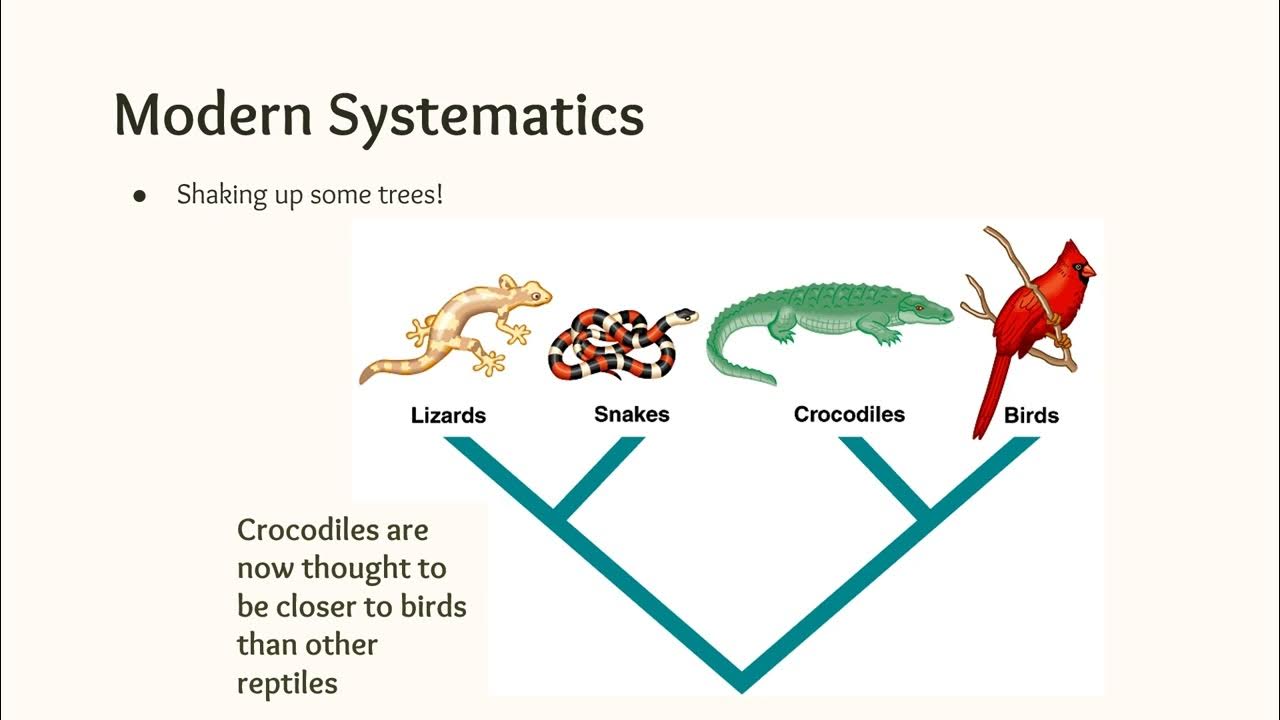READING PHYLOGENETIC TREES (ALL ABOUT SISTER TAXA, MONOPHYLETIC GROUPS, PARSIMONY)
Summary
TLDRThis video explains phylogenetic trees, which represent the evolutionary relationships among organisms, emphasizing that these trees are hypotheses rather than absolute facts. It covers key concepts like roots, nodes, sister taxa, and classifications of groups such as monophyletic, paraphyletic, and polyphyletic. The video also discusses parsimony, suggesting that the simplest tree with the least evolutionary events is often the most likely. Finally, it differentiates between homologous and analogous characters, highlighting how traits can evolve either from common ancestors or independently due to similar environmental pressures. The informative nature of the video encourages viewers to engage further.
Takeaways
- 😀 Phylogenetic trees illustrate evolutionary relationships among organisms and are hypotheses rather than absolute facts.
- 🌳 The root of the tree represents the oldest common ancestor of all species depicted.
- 🔄 Nodes on the tree signify points of divergence where species branch off from a common ancestor.
- 🤝 Species that share a more recent common ancestor are considered more closely related.
- 👫 Sister taxa are groups that are more closely related to each other than to any other group on the tree.
- 📊 Monophyletic groups include a common ancestor and all its descendants, while paraphyletic groups exclude some descendants.
- ❌ Polyphyletic groups consist of members that do not share a recent common ancestor.
- 🔍 Parsimony suggests that the simplest tree with the fewest evolutionary events is preferred.
- 🐾 Homologous characters are inherited from a common ancestor, whereas analogous characters develop independently due to similar environmental pressures.
- 🌍 Convergent evolution explains how unrelated species can develop similar traits in response to similar challenges.
Q & A
What is the primary purpose of a phylogenetic tree?
-A phylogenetic tree illustrates the evolutionary relationships between different organisms, serving as a hypothesis rather than an established fact.
What does the root of a phylogenetic tree represent?
-The root of a phylogenetic tree represents the oldest common ancestor of all the species depicted in that tree.
What are nodes in the context of phylogenetic trees?
-Nodes are points where branches split, indicating where species diverged from a common ancestor, thereby illustrating speciation events.
How is the closeness between two species determined on a phylogenetic tree?
-Closeness is determined by how recently two species share a common ancestor; species that share a more recent ancestor are considered more closely related.
What are sister taxa?
-Sister taxa are groups that are more closely related to each other than to any other group on the phylogenetic tree, sharing a more recent common ancestor.
What is a monophyletic group?
-A monophyletic group includes a common ancestor and all its descendants, forming a complete lineage.
What distinguishes a paraphyletic group from a monophyletic group?
-A paraphyletic group includes some but not all descendants of a common ancestor, whereas a monophyletic group includes all descendants.
Can you explain what a polyphyletic group is?
-A polyphyletic group consists of members that do not share a recent common ancestor but are grouped together, often due to superficial similarities.
What does parsimony mean in the context of phylogenetics?
-Parsimony refers to the principle that the simplest phylogenetic tree, which has the least number of evolutionary events, is considered the most likely hypothesis of evolutionary relationships.
What is the difference between homologous and analogous characters?
-Homologous characters are traits present in a common ancestor and its descendants, while analogous characters arise independently in different species due to similar environmental pressures.
Outlines

Этот раздел доступен только подписчикам платных тарифов. Пожалуйста, перейдите на платный тариф для доступа.
Перейти на платный тарифMindmap

Этот раздел доступен только подписчикам платных тарифов. Пожалуйста, перейдите на платный тариф для доступа.
Перейти на платный тарифKeywords

Этот раздел доступен только подписчикам платных тарифов. Пожалуйста, перейдите на платный тариф для доступа.
Перейти на платный тарифHighlights

Этот раздел доступен только подписчикам платных тарифов. Пожалуйста, перейдите на платный тариф для доступа.
Перейти на платный тарифTranscripts

Этот раздел доступен только подписчикам платных тарифов. Пожалуйста, перейдите на платный тариф для доступа.
Перейти на платный тариф5.0 / 5 (0 votes)






